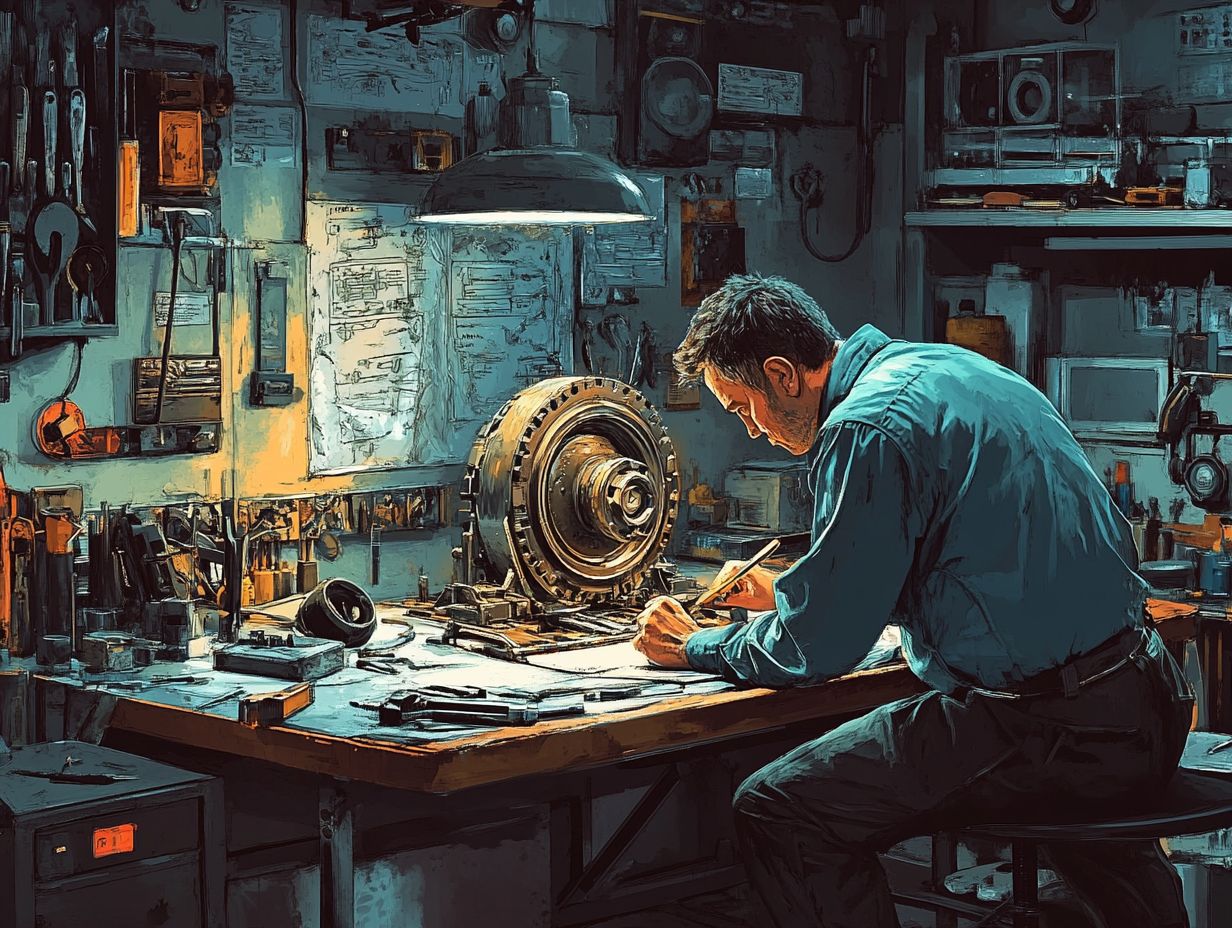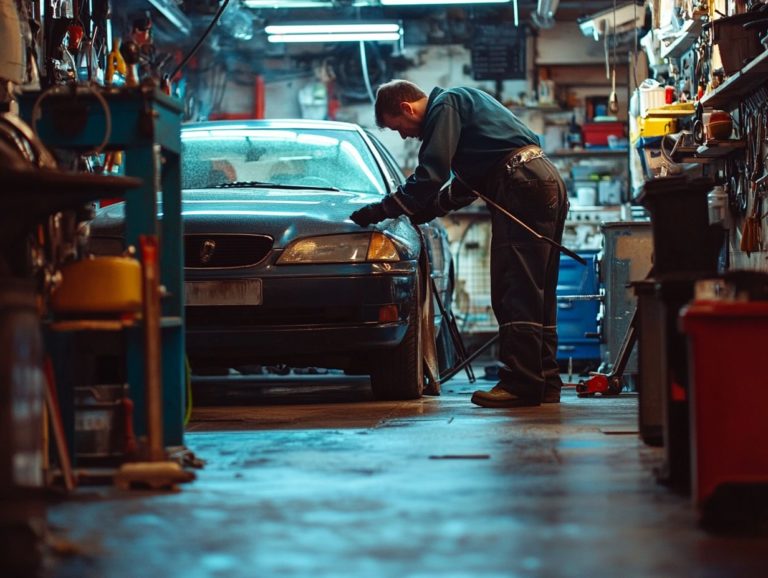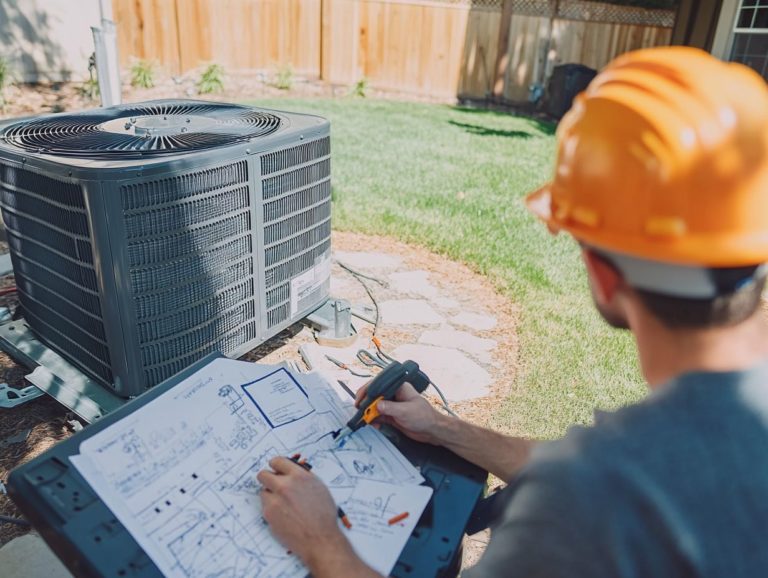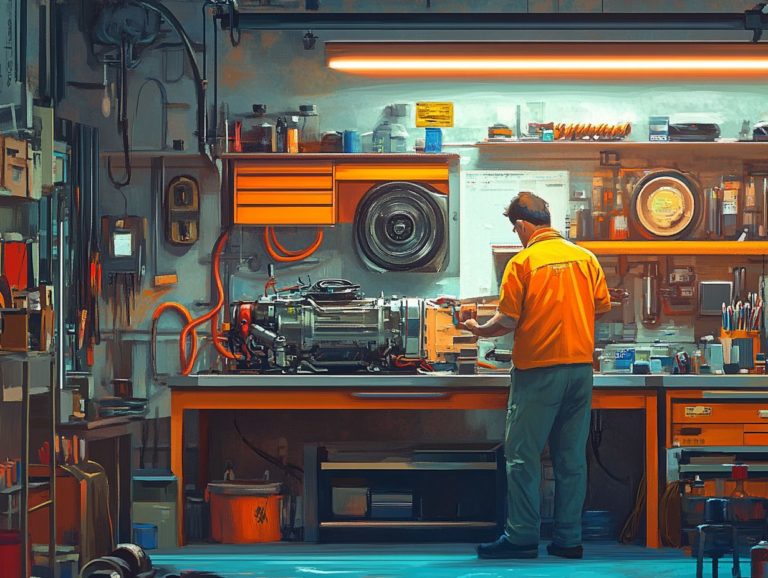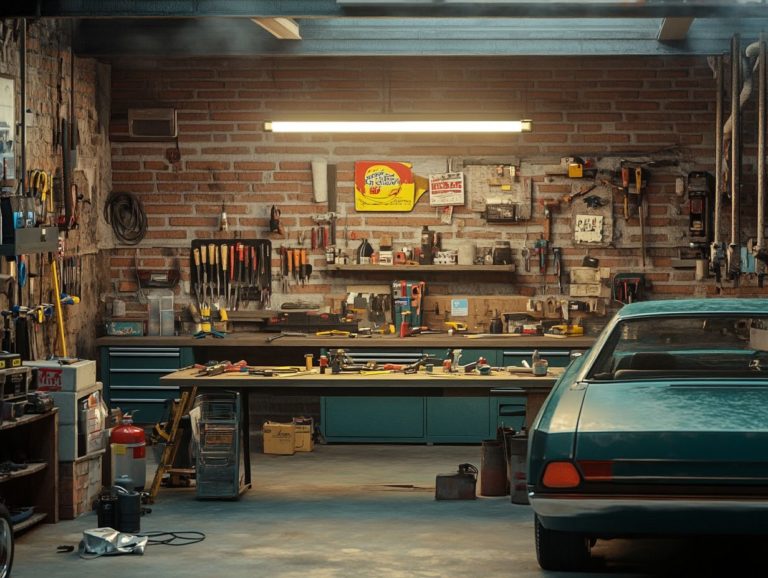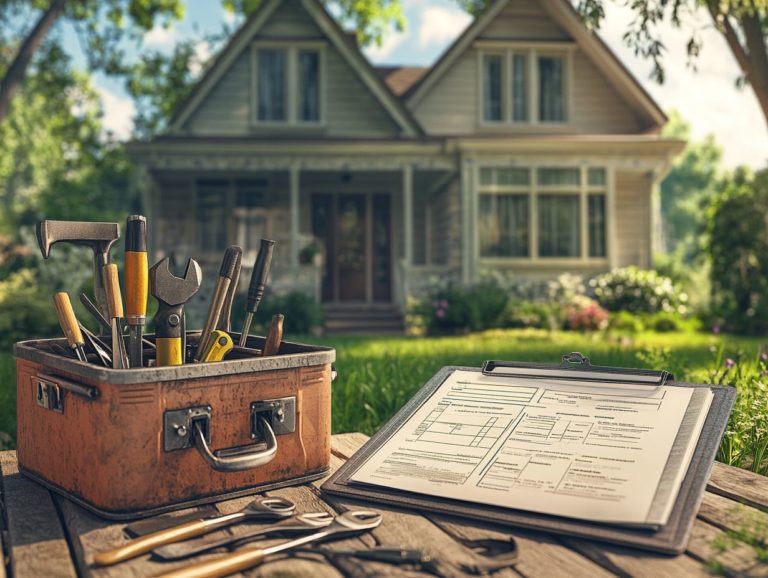Understanding Common Clutch Problems
A well-functioning clutch is essential for a seamless driving experience; however, when problems arise, they can turn your time behind the wheel into a frustrating ordeal.
This article delves into what a clutch is and how it operates, alongside the key signs that may indicate its impending failure. You ll discover common culprits behind clutch issues, effective diagnostic techniques, and your options for repair or replacement.
You will also find maintenance tips to help prevent future complications. Whether you re an experienced driver or a new car owner, grasping these concepts will empower you to keep your vehicle performing at its best.
Contents
Key Takeaways:
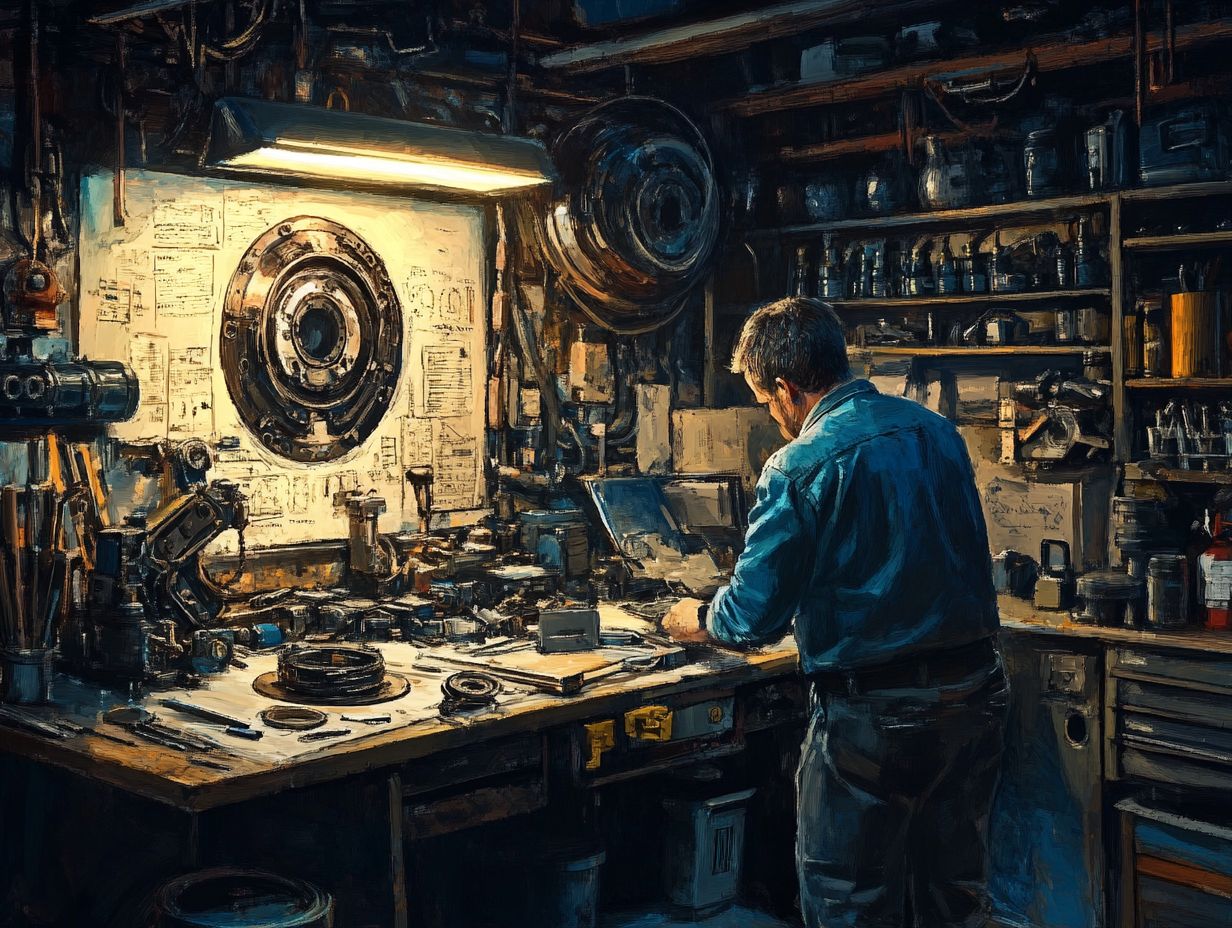
- A clutch is a vital component of a vehicle’s transmission system, responsible for transferring power from the engine to the wheels.
- Common signs of a failing clutch include difficulty shifting gears, strange noises, and a burning smell.
- Excessive wear and tear and improper use or maintenance are the main causes of clutch problems. Regular maintenance and proper driving habits can help prevent these issues.
- Addressing clutch problems early can save you from costly repairs down the road!
What is a Clutch and How Does it Work?
A clutch is an essential element of your vehicle’s power delivery system, connecting the engine to the transmission and enabling smooth gear shifts and control over power delivery. When you engage the clutch pedal, you effectively manage this connection, allowing for smooth transitions while driving.
The clutch system typically consists of the pressure plate, friction disc, and hydraulic fluid, which is the liquid used to transfer power within the clutch system. Components like the master cylinder and slave cylinder play vital roles in its operation. Understanding how the clutch works is crucial for maintaining your vehicle and troubleshooting any potential issues.
When you press down on the clutch pedal, you’re pushing hydraulic fluid from the master cylinder to the slave cylinder. This action applies pressure to the pressure plate, which disengages the friction disc from the flywheel, allowing you to change gears without the dreaded grinding noise.
Proper adjustment of the clutch system is key; if it’s misaligned, you may face incomplete disengagement, making shifting difficult and causing premature wear. This seemingly simple mechanism has a significant impact on your vehicle s performance and your overall driving experience, ensuring smoother transitions and enhancing your control in various driving conditions.
Signs of a Failing Clutch
Recognizing the signs of a failing clutch is essential for you as a driver, ensuring both the longevity and performance of your vehicle.
Common clutch problems, such as slipping, unusual noises, and difficulties in engaging or disengaging gears, demand your attention. Ignoring these symptoms can lead to more severe issues down the road, making it imperative to address them promptly.
Identifying Common Symptoms
<pIdentifying common symptoms of a failing clutch is crucial for you as a driver, allowing you to tackle potential issues before they escalate. Pay attention to signs like a slipping clutch, unusual noises, or difficulty in engaging and disengaging the clutch these are clear indicators that something might be amiss.
For example, if you notice your clutch slipping, you may experience unexpected engine revs without a corresponding increase in vehicle speed. This can lead to accelerated wear and the risk of breakdowns. Likewise, if you hear unusual noises, such as grinding or chirping sounds during gear shifts, it could signal more serious mechanical failures, ultimately affecting your overall driving performance.
Should you find yourself struggling to fully engage or disengage the clutch, beware; this can result in jerky movements or even difficulties in shifting gears. Ignoring these indicators can lead to more extensive repairs and create unsafe driving conditions, ultimately jeopardizing the longevity and functionality of your vehicle’s transmission system.
Causes of Clutch Problems
Grasping the root causes of clutch problems is crucial for maintaining your vehicle in peak condition and ensuring timely repairs.
Common issues often arise from excessive wear and tear, improper use of the clutch system, and overlooking essential maintenance. Neglecting these aspects can result in worn components and faulty parts that compromise your vehicle’s performance.
Excessive Wear and Tear
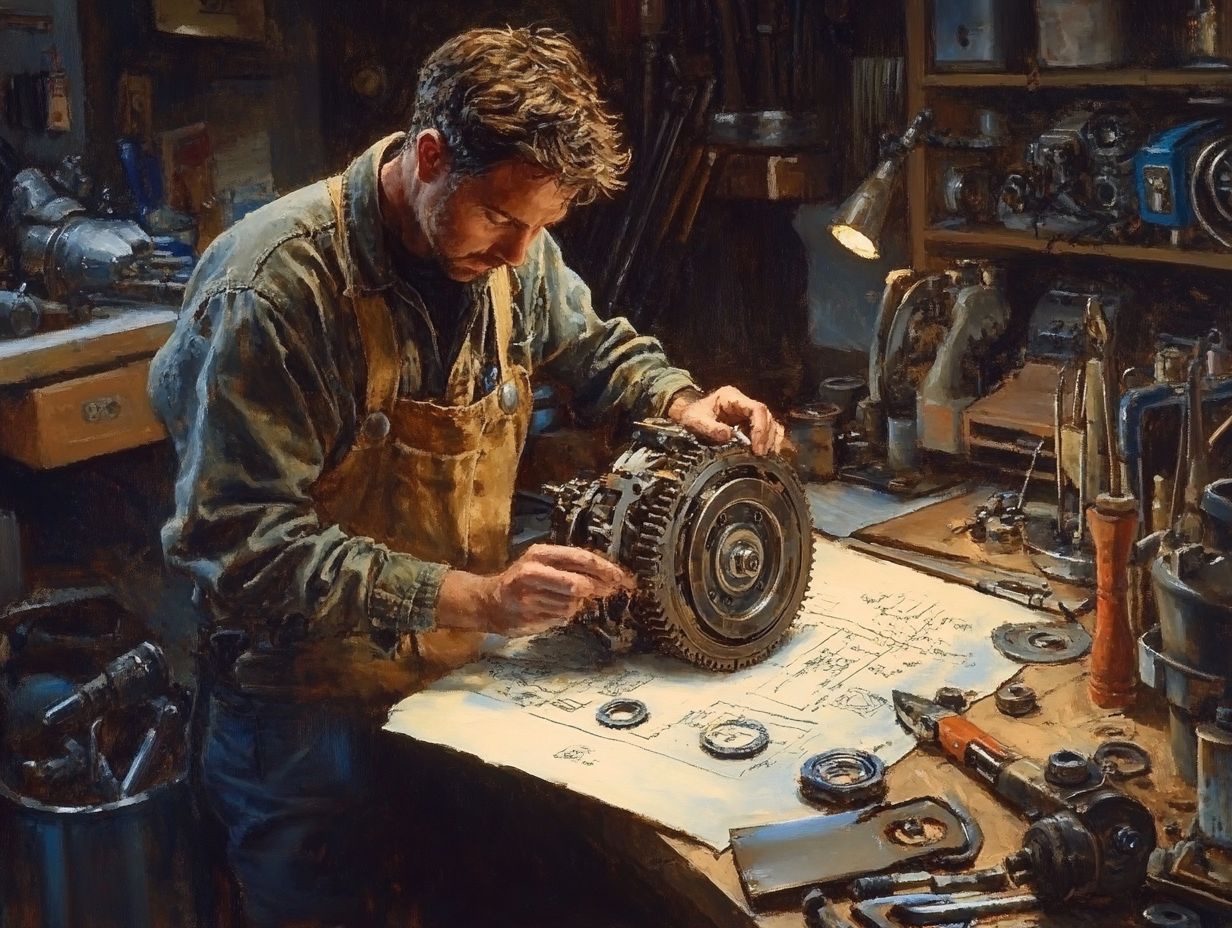
Clutch wear can cause slipping and reduce performance. It often happens from too much gear shifting and not enough maintenance.
Your driving habits significantly impact clutch longevity. For instance, excessive idling with the clutch engaged or riding the clutch pedal creates unnecessary friction, leading to faster wear.
Driving in hilly terrains or heavy traffic puts extra stress on the clutch components. Regular maintenance is key. Timely checks can boost performance and help your clutch last longer.
Addressing issues early can prevent major failures! Stay alert to any changes in your vehicle’s performance and take action to keep your system in peak condition.
Improper Use and Maintenance
Using the clutch incorrectly can harm your vehicle’s performance. Not adjusting the pedal or riding the clutch can lead to issues like sticking.
This is especially true if you frequently ride the clutch. This habit not only speeds up wear but can also cause overheating, making the clutch less effective over time. Understanding how to operate the clutch is crucial for extending its lifespan.
Regular inspections and proactive maintenance practices, like checking fluid levels and ensuring proper pedal alignment, can help you avoid issues. By being aware of these factors, you can maintain optimal clutch function and enhance your overall driving experience.
Diagnosing Clutch Problems
Diagnosing clutch problems is vital for keeping your vehicle s transmission running smoothly. A thorough inspection of several components, including the fluid that helps operate the clutch, is essential.
By examining these elements closely, you can identify any issues that may be affecting performance.
Diagnostic Techniques and Tools
Using the right diagnostic techniques and tools is key for troubleshooting clutch problems. Mechanics often rely on specialized tools to inspect the hydraulic system, assess clutch operation, and find any underlying issues.
A common method is the pressure test, which measures the pressure of the fluid that operates the clutch to ensure it meets manufacturer specifications. Also, check fluid levels to confirm that the fluid is at the correct level; insufficient fluid can cause erratic clutch performance or even complete failure.
By utilizing tools like pressure gauges and fluid level indicators, you can accurately diagnose potential problems. These techniques provide valuable insights into the health of your clutch system, paving the way for effective repairs and better vehicle performance.
Repairing or Replacing a Clutch
When you spot issues with your clutch, you face the important choice of whether to repair or replace the whole system.
Repairing the clutch can involve swapping out worn components or fixing faulty parts. However, if you’re experiencing severe engagement problems, a complete replacement might be the best option.
Options for Fixing a Faulty Clutch
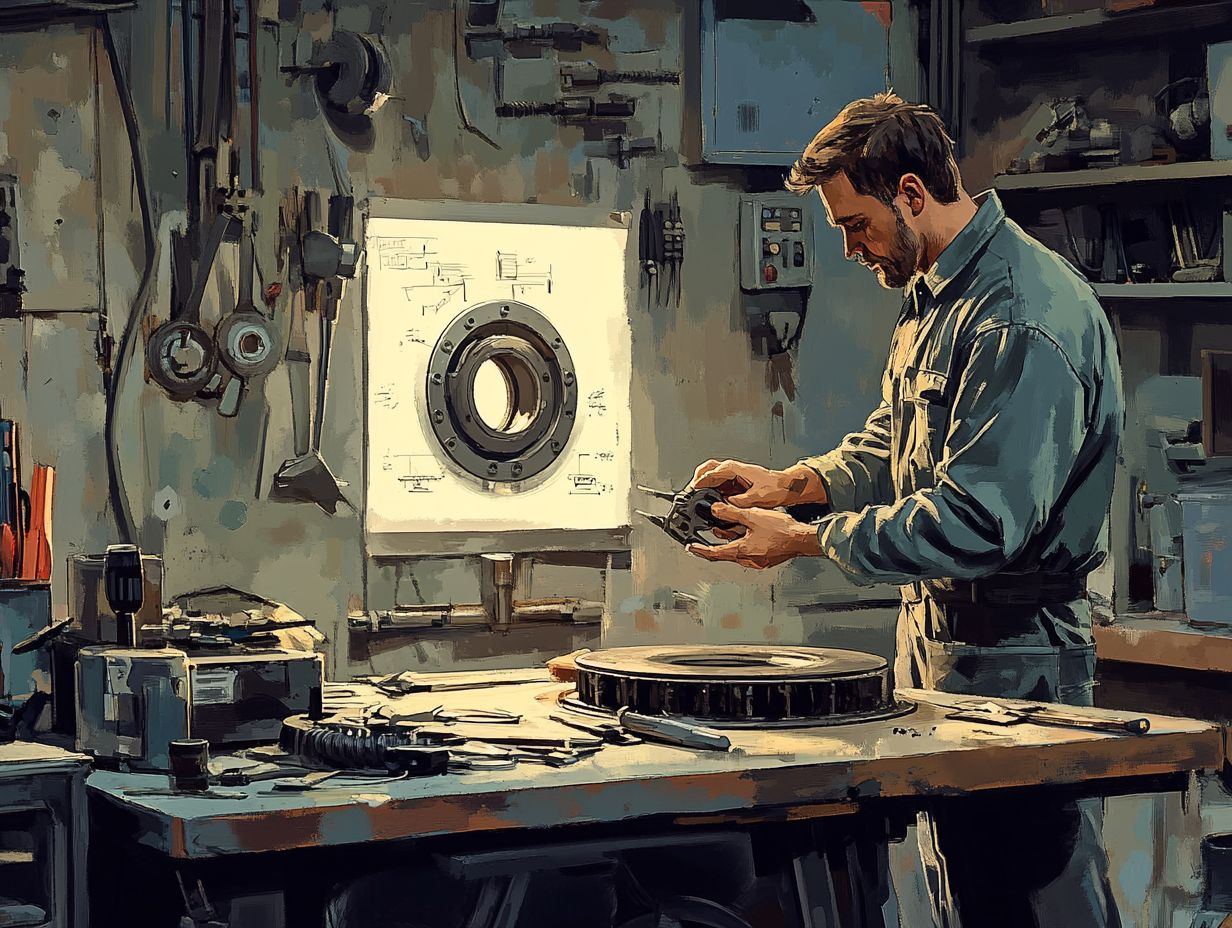
You have several options for addressing a faulty clutch. These range from straightforward repairs to complete replacements. A mechanic will likely give your clutch a good look to determine whether worn components can be salvaged or if a full replacement is necessary.
They might suggest repairing the flywheel or replacing the clutch disc. This could save you some money but might only offer a temporary fix. Choosing a complete replacement ensures long-term reliability, albeit at a higher upfront cost.
Don’t overlook the hydraulic system’s role in clutch performance. If the hydraulic fluid is contaminated or running low, you could face inadequate pressure, complicating your clutch problems even further.
Understanding how hydraulic fluid impacts the clutch’s operation equips you to make informed repair decisions, striking a balance between cost and durability.
Preventing Clutch Problems
Preventing clutch problems is crucial for ensuring your vehicle performs at its best and elevating your overall driving experience. By committing to regular clutch maintenance such as making precise adjustments and keeping a close eye on hydraulic fluid levels you can significantly reduce the chances of encountering any issues.
Maintenance Tips and Best Practices
Following maintenance tips and best practices is essential for ensuring the longevity of your clutch system. Regularly checking hydraulic fluid levels and making necessary adjustments can greatly enhance your vehicle control.
Incorporate routine inspections of your clutch components, including the release bearing and pressure plate. By monitoring wear and tear, you can identify potential issues before they escalate into costly repairs.
Timely fluid changes are equally crucial. Dirty or low fluid can compromise clutch operation, leading to slippage or difficulty in shifting gears. If you take time to do these practices, you not only boost clutch performance but also cultivate a smoother, more reliable ride, minimizing the risk of unexpected breakdowns.
Frequently Asked Questions
-
What are some common symptoms of clutch problems?
Some common symptoms of clutch problems include difficulty shifting gears, a burning smell, strange noises, and a slipping or jerking feeling when accelerating.
-
How do I know if my clutch is worn out?
If your clutch pedal feels soft and spongy, or if you have to push it all the way to the floor to shift gears, your clutch may be worn out and in need of replacement.
-
Can a bad clutch cause my car to not start?
In some cases, yes. If your clutch is not disengaging properly, your car may have difficulty starting because the engine is still connected to the transmission.
-
What causes a clutch to fail?
Clutches can fail due to age, high mileage, aggressive driving habits, or an oil leak that has contaminated the clutch disc.
-
How often should I get my clutch inspected?
It is recommended to have your clutch inspected every 30,000 miles or sooner if you notice any symptoms of clutch problems.
-
Can I drive with a bad clutch?
It is not recommended to drive with a bad clutch, as it can lead to further damage and potentially cause your car to become inoperable. It is best to have the issue diagnosed and repaired as soon as possible.

